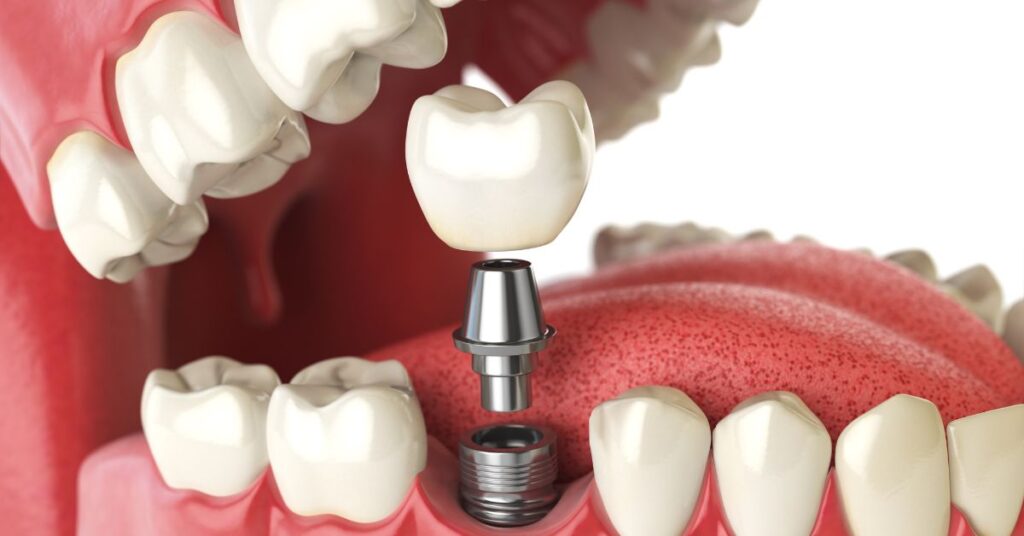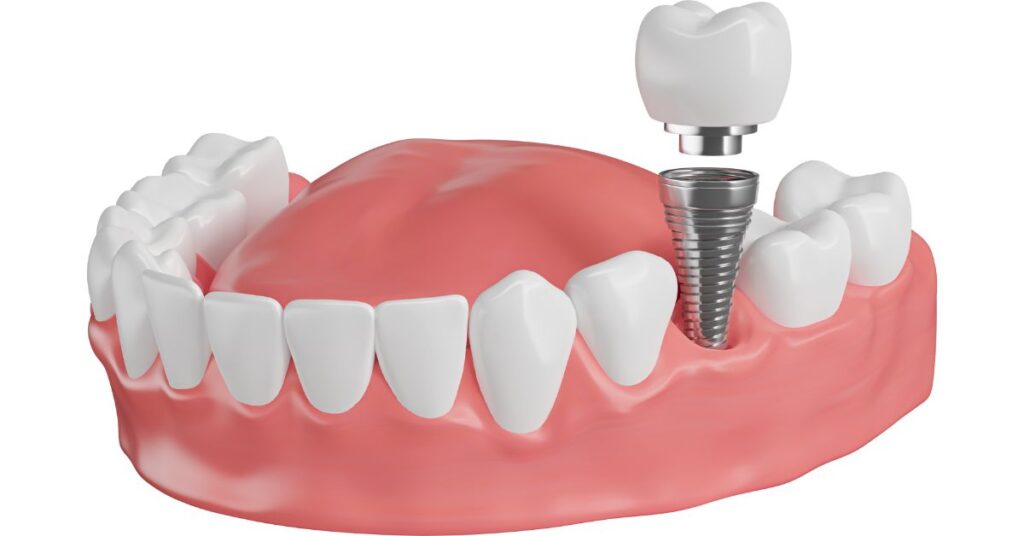
Introduction
Getting dental implants is a big decision, and it’s crucial to understand the Dental Implant Recovery Time before going through with the procedure. While the result is a beautiful, functional smile, the journey to get there involves some downtime and healing. Knowing what to expect can help you prepare mentally and physically for the recovery period, ensuring a smooth and successful experience.
The recovery time for dental implants can be divided into two distinct stages: the initial implant placement and the abutment and crown placement. Each stage has its timeline and considerations, as the body needs time to heal and integrate the implant properly.
Stage 1: The Initial Implant Placement

Understanding the Implant Fusion Process
After the implant post is surgically placed in the jawbone, the body begins the process of osseointegration. This crucial step involves the bone fusing to the implant, creating a strong and stable foundation for the replacement tooth. Without proper osseointegration, the implant may fail, making this stage of the recovery process critical.
Typical Recovery Timeline for Stage 1
The initial healing period after implant placement typically lasts between 3 to 6 months. During this time, patients should expect some discomfort, swelling, and bruising around the implant site. However, most individuals can return to their daily activities within a day or two after the procedure, as the discomfort is typically manageable with over-the-counter pain medication.
Factors Affecting Stage 1 Recovery Time
Several factors can influence the recovery time for the initial implant placement. These include:
Bone density:
Patients with lower bone density may require a longer healing period for the implant to fuse properly with the jawbone.
Gum health:
Existing gum disease or poor oral hygiene can increase the risk of complications and slow down the healing process.
Diet:
A nutrient-rich diet, particularly one high in vitamin C and calcium, can promote faster healing and bone growth.
Tobacco use:
Smoking and other tobacco products can constrict blood vessels, reducing the flow of oxygen and nutrients to the implant site and impeding healing.
Stage 2: The Abutment and Crown Placement

The Importance of the Abutment and Crown
Once the implant has successfully fused with the jawbone, the abutment and crown are placed to complete the dental implant process. The abutment acts as a connector between the implant and the crown, while the crown restores the function and natural appearance of the missing tooth.
Typical Recovery Timeline for Stage 2
The recovery period for the abutment and crown placement is generally shorter than the initial implant stage, typically lasting 1 to 2 weeks. Patients can expect some discomfort and swelling during this time, but it’s usually less significant than the initial implant surgery.
Factors Affecting Stage 2 Recovery Time
Similar to the initial implant stage, factors such as bone density, gum health, oral hygiene, diet, and tobacco use can also impact the recovery time for the abutment and crown placement. Proper care and attention to these factors can help ensure a smoother and faster recovery.
Tips for Promoting Faster Healing

Proper Oral Hygiene
Maintaining excellent oral hygiene is critical during Dental Implant Recovery Time. Patients will receive specific instructions from their dentist, which may include using a saltwater rinse and avoiding certain foods or activities that could disturb the implant site. Keeping the area clean and free of bacteria can help prevent infections and promote faster healing.
Managing Swelling and Bleeding
Swelling and minor bleeding are normal occurrences after dental implant surgery. To manage these side effects, patients can use cold compresses and gentle pressure to reduce swelling and encourage clotting. Following the dentist’s instructions for managing swelling and bleeding can help minimize discomfort and ensure proper healing.
Rest and Recovery
Adequate rest and avoiding strenuous activities are essential for the body’s healing process after dental implant surgery. Patients will be advised on when they can resume their normal routines and activities, as overdoing it too soon can delay recovery and potentially compromise the implant’s integration.
Conclusion
By understanding the Dental Implant Recovery Time and following your dentist’s guidance, you can navigate the healing period with ease and enjoy the transformative benefits of dental implants for years to come. For personalized advice and expert care, visit Sri Sanjeevini Dental. Our experienced team is here to support you through every step of your dental implant journey. Schedule your consultation today and take the first step towards a healthier, more confident smile!
